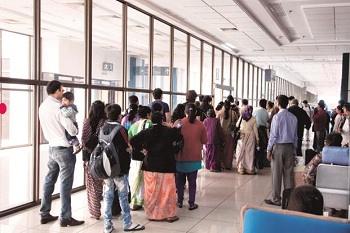India’s aviation ministry will install hotlines in 13 important airports to plug any communication gaps in the event a plane is hijacked. The move is among several being adopted in the wake of heightened security concerns and includes new guidelines for passengers and airport visitors. India has witnessed around six hijackings since independence. The last major one occurred in 1999 when Indian Airlines Flight IC-814 flying from Kathmandu was hijacked by militants and diverted to Kandahar, Afghanistan. Experts cite communication gaps as the main reason why nothing was done when the plane stopped to refuel in Amritsar.
“We have decided to have two dedicated lines through which we can do immediate video conferencing in case of any hijack situation” said a government official. “They will serve as permanent hotlines.” The lines, which will allow for live video conferencing, will be made available at 13 airports with dedicated rooms. They will be connected to a crisis management room in the civil aviation ministry and another in the office of the cabinet secretary.
The airports are: Delhi, Mumbai, Kolkata, Chennai, Hyderabad, Bengaluru, Trivandrum, Nagpur, Ahmedabad, Chandigarh, Jaipur, Lucknow and Guwahati. The airports chosen cover most of India’s geography. The plan is that the hijacked plane will be diverted to the closest airport quickly and instant communication on ground situation and potential demands of hijackers be relayed immediately to the control rooms.
In other steps, the ministry has also decided to ban visitor entry inside airports across the country and asked passengers to report early for flights. Analysts say the recent attack on the Indian Air Force base in Pathankot should push the government to review airport security measures. Last year, India cleared a tough anti-hijacking law that prescribed the death penalty for hijackers.








